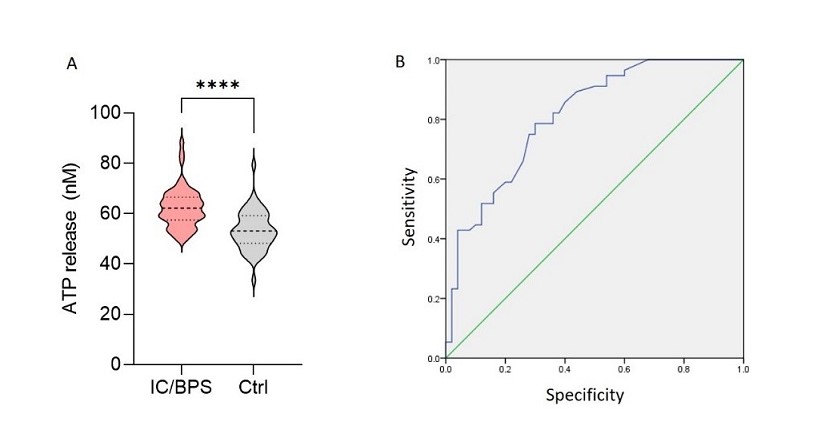Urinary ATP may be a biomarker of interstitial cystitis/bladder pain syndrome and its severity
DOI:
https://doi.org/10.17305/bb.2023.9694Keywords:
Lower urinary tract symptoms (LUTS), lower abdominal pain, interstitial cystitis/ bladder pain syndrome (IC/BPS), adenosine triphosphate (ATP)Abstract
Urinary tract cells respond to bladder distension by releasing adenosine triphosphate (ATP). Patients with interstitial cystitis/bladder pain syndrome (IC/BPS) exhibit elevated urinary ATP levels compared to asymptomatic controls. This study aimed to evaluate the potential of urinary ATP as a non-invasive biomarker for IC/BPS and its correlation with symptom severity. We included 56 patients diagnosed with IC/BPS and 50 asymptomatic controls. Urine samples were collected from both groups. Urinary ATP levels were quantified using the luciferin-luciferase bioluminescence method. The severity of IC/BPS symptoms was assessed using the visual analogue score (VAS), Interstitial Cystitis Symptom Index (ICSI), and Interstitial Cystitis Problem Index (ICPI) from the O'Leary-Sant score. We specifically examined the correlation between symptom scores and urinary ATP levels in IC/BPS patients. Urinary ATP levels were significantly higher in IC/BPS patients compared to the control group (P < 0.0001). There was a significant positive correlation between urinary ATP concentrations and VAS, ICPI, and ICSI scores among IC/BPS patients (P < 0.0001). The threshold value for ATP concentration was set at 56.6 nM, with an area under the receiver operating characteristic (ROC) curve of 0.811 (95% CI 0.730 - 0.892). Our findings indicate that IC/BPS patients excrete elevated amounts of ATP in their urine. This suggests that urinary ATP might serve as a non-invasive biomarker for IC/BPS, with a predictive potential in terms of symptom severity.
Citations
Downloads

Downloads
Additional Files
Published
Issue
Section
Categories
License
Copyright (c) 2023 Yanyuan Wu, Yedie He, Jun Qi, Song Wang, Zongping Wang

This work is licensed under a Creative Commons Attribution 4.0 International License.
How to Cite
Accepted 2023-09-25
Published 2024-01-03









